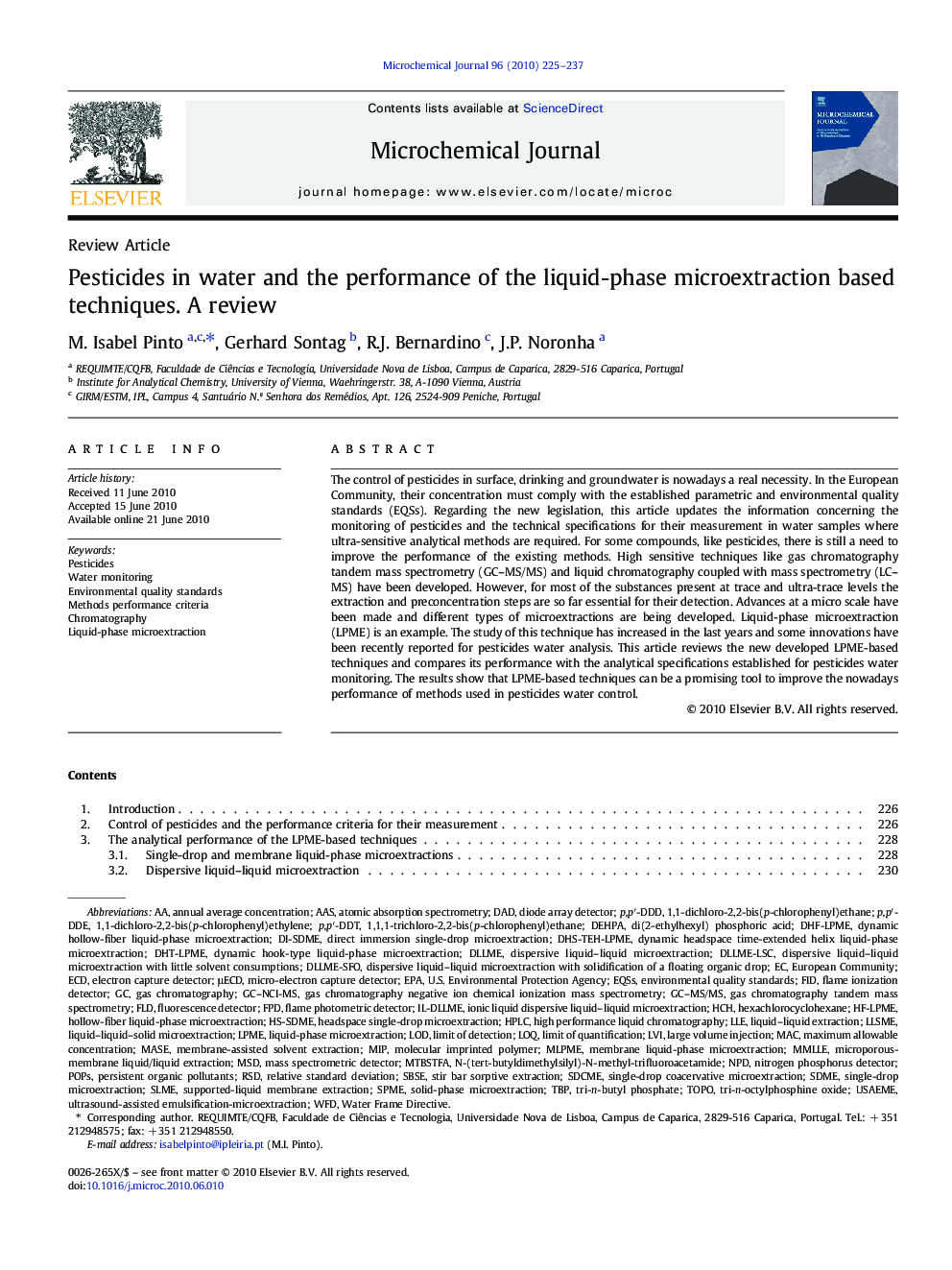| Article ID | Journal | Published Year | Pages | File Type |
|---|---|---|---|---|
| 1227917 | Microchemical Journal | 2010 | 13 Pages |
The control of pesticides in surface, drinking and groundwater is nowadays a real necessity. In the European Community, their concentration must comply with the established parametric and environmental quality standards (EQSs). Regarding the new legislation, this article updates the information concerning the monitoring of pesticides and the technical specifications for their measurement in water samples where ultra-sensitive analytical methods are required. For some compounds, like pesticides, there is still a need to improve the performance of the existing methods. High sensitive techniques like gas chromatography tandem mass spectrometry (GC–MS/MS) and liquid chromatography coupled with mass spectrometry (LC–MS) have been developed. However, for most of the substances present at trace and ultra-trace levels the extraction and preconcentration steps are so far essential for their detection. Advances at a micro scale have been made and different types of microextractions are being developed. Liquid-phase microextraction (LPME) is an example. The study of this technique has increased in the last years and some innovations have been recently reported for pesticides water analysis. This article reviews the new developed LPME-based techniques and compares its performance with the analytical specifications established for pesticides water monitoring. The results show that LPME-based techniques can be a promising tool to improve the nowadays performance of methods used in pesticides water control.
